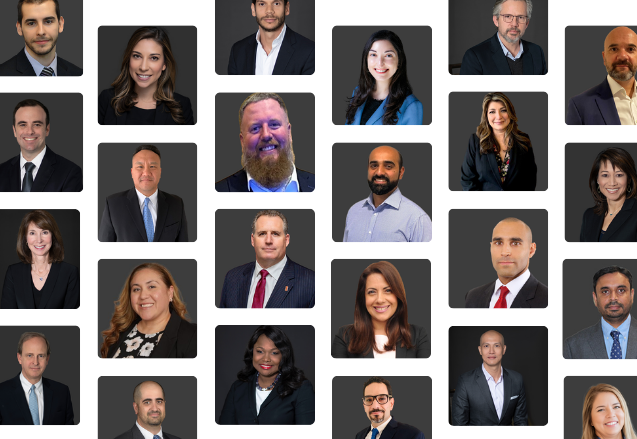This site uses cookies to provide you with a more responsive and personalized service. By using this site you agree to our use of cookies. You can learn more about our use of cookies and similar technologies and your choices by reviewing our Privacy Policy. By clicking “I agree” you agree to our use of cookies and similar technologies.
H-2B Visa: 3 Must Knows for Employers.
Each year the Department of Homeland Security (DHS) oversees the administration of the H-2B program that provides up to 66,000 visas for non-citizen workers to enter the United States to fill jobs in non-agricultural seasonal employment. These visas, while for several industries including hospitality, construction, and theme parks, have predominantly been used by landscaping businesses.
The program can be beneficial to both the employers and the non-citizen employees; however, there are several areas that without proper preparation and oversight can cause delays in employers getting the workers they need or even having petitions denied.
Key areas employers need to pay attention to:
- Temporary Employment
The purpose of a H-2B visa is to allow U.S. employers the ability to hire non-citizen workers due to a temporary increase in demand for labor. The DHS considers a job “temporary” if an employer can demonstrate the positions are a one-time occurrence, seasonal, peak load need or an intermittent need. In addition, before filing applications with DHS, an employer must get a temporary labor certification (TLC) from the Department of Labor. When applying for the TLC, the employer must attest that they have conducted a thorough recruitment campaign to find U.S. workers and that there are not enough willing, able, and qualified U.S. workers. Secondly, they must show these jobs are temporary.
2. Timing
The H-2B allotment of 66,000 new visas depletes very quickly. Visa applications are processed on a first come first served basis. So, timing for an employer is critical. One half of the visas are issued in the first 6 months (October 1-March 31) of the U.S. government fiscal, not calendar year. The remaining 33,000 visas are for employment that will begin after April 1st but before September 30th. An employer needs to start deciding a minimum of 6 months prior to when they wish to file for non-citizen workers. One of the hardest decisions for an employer is determining just how many visas they will need as too few will hurt their business and too many will mean they are paying for workers they do not need.
3. Wage Compliance
In addition to an employer certifying that they have attempted to recruit U.S. workers, they must also attest that they will abide by all federal, state, and local laws. This includes paying the prevailing wage for the area in which the worker will be performing the work. Additionally, employers must ensure the employment of H-2B workers will not adversely affect the wages and working conditions of U.S. workers employed in similar jobs.
Also, besides the wage and non-adverse requirements, the H-2B employer must guarantee that the H-2B employee will be employed for three quarters of the workdays over a three-month period.
Risks and Vulnerabilities in the H-2B Program
Currently the level of H-2B workers that are in the U.S. is unprecedented. While there are limitations on the numbers allowed to enter, the number of workers can be greater as they are allowed to remain in the U.S. up to three years. Unfortunately, the growth of the program has created less scrupulous activities as well.
Workers have been exposed to labor trafficking, wage fraud, payment of recruitment fees (which is illegal under regulations of the H-2B process), and threats of retaliation against workers. This is due in part to workers who entered under a H-2B visa are tied to a particular employer and leaving jeopardizes their immigration status. Therefore, workers are reluctant to notify authorities when situations like this occur.
To address the problem, in 2022, the White House launched the H-2B Worker Protection Taskforce to strengthen protections for workers in the H-2B program. The Taskforce’s work focuses on three key challenges: (1) threats to H-2B program integrity; (2) H-2B workers’ fundamental vulnerabilities, including their limited ability to leave abusive employment situations without jeopardizing their immigration status; and (3) the impermissible use of the H-2B program to avoid hiring U.S. workers. In order to ensure compliance, the Taskforce has proposed that if an employer violates H-2B program regulations, including failure to demonstrate their ability and intent to follow requirements, they may become ineligible to employ H-2 workers.
Where Does This Leave Employers?
Navigating the H-2B visa program can appear to be intimidating at first. Employers should take steps to ensure a smooth approval process by:
- Beginning your preparation well in advance of the need for workers,
- Carefully deciding the number of workers you will need, and
- Once the workers are in the U.S., properly completing the onboarding process as you would your other employees, including completing the Employment Eligibility Verification Form.
With careful planning and attention to detail, the benefits of the program outweigh the alternative – employers not being able to meet their temporary seasonal goals thus affecting the overall economy.
The consequences of missteps or oversights can be significant, potentially resulting in delays, denials, or even legal repercussions. That’s why engaging with an expert immigration provider like Guidepost is essential. We have partnered with many U.S. employers to solve issues of concern and solidify immigration practices. We fully understand the H-2B benefits and pitfalls and can guide employers through each step, mitigating risks and ensuring a smooth approval process. By partnering with Guidepost, employers can confidently navigate the H-2B program, secure the workforce they need, and contribute positively to both their business and the broader economy.

John G. Connolly
Senior Managing Director
John G. Connolly provides subject matter expertise to large, international corporations regarding employer compliance with federal immigration laws, including visa compliance and reviews and remediations of I-9 forms and the E-Verify processes. He also works with firms in conducting due diligence investigations as well as providing subject matter expertise in support of litigation. He previously served as the Deputy Executive Associate Director for the Department of Homeland Security Immigration and Customs Enforcement (DHS-ICE). There he had a wide range of management responsibilities, including supervision of Homeland Security Investigations (HSI) which included investigations involving money laundering, intellectual property rights and customs and immigration violations.


